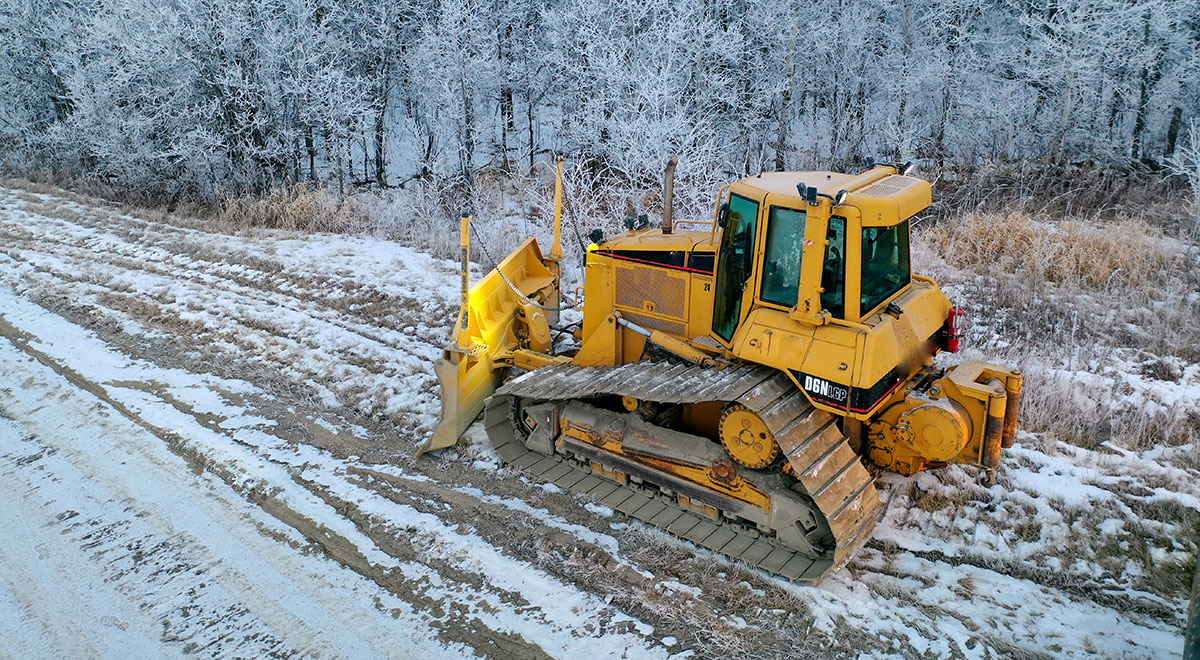The Challenges of Northern Development
Working in northern Canada has been both an incredible opportunity and a profound responsibility. Over more than 20 years as an ice road engineer and Arctic infrastructure specialist, I’ve seen firsthand how development can transform communities, create jobs, and improve access to essential resources. At the same time, I’ve witnessed the fragility of northern ecosystems—permafrost, rivers, lakes, and wildlife that are highly sensitive to disturbance. Balancing development with environmental stewardship is not optional; it’s critical for sustaining the North for future generations.
In the North, every project comes with a set of unique challenges. Frozen lakes and rivers are natural highways during the winter, but construction and industrial activities can alter landscapes permanently if not approached carefully. Similarly, thawing permafrost threatens both infrastructure and ecosystems. This delicate balance requires thoughtful engineering, planning, and collaboration.
Planning with Purpose
The foundation of responsible northern development is careful planning. Before construction begins, we assess the environmental impact of each project. This includes studying soil conditions, water flow, wildlife patterns, and seasonal cycles. Planning also requires understanding the social and cultural context of the land, particularly when projects intersect with Indigenous territories.
Engaging with local communities is a key part of this process. Indigenous elders and residents provide knowledge about land use, wildlife behavior, and historical environmental changes that cannot be captured in technical reports alone. By listening to these insights, engineers can design projects that meet development goals while minimizing harm to the environment.
Sustainable Construction Practices
Sustainability in northern construction starts with the methods we use. Heavy machinery and large crews are necessary for building roads, bridges, and facilities, but they can also damage fragile ecosystems if not managed responsibly. One approach is modular construction, where materials and structures are prefabricated off-site and then assembled in the field. This reduces time on sensitive terrain, lowers the risk of spills or erosion, and minimizes disturbance to permafrost and vegetation.
Timing construction to coincide with frozen ground is another key strategy. Building on ice and frozen soil allows heavy equipment to move safely without compacting the underlying ground or disrupting natural drainage. In many cases, winter construction actually protects the environment compared to working in warmer seasons.
Integrating Technology for Sustainability
Modern technology plays an essential role in balancing development with environmental care. Satellite imaging, ground-penetrating radar, and climate modeling allow engineers to monitor permafrost stability, ice thickness, and water systems in real time. These tools help us make informed decisions about when and where to build, reducing risks to both the environment and infrastructure.
For example, predictive models can highlight areas where thawing permafrost could compromise a road or bridge. Early identification of these risks allows for design adjustments or alternative routes, ensuring that development proceeds safely without causing long-term environmental damage.
Minimizing Impact on Wildlife
Northern ecosystems are home to species that are highly sensitive to human activity. Construction noise, vehicle traffic, and altered landscapes can disrupt migration, breeding, and feeding patterns. One of my priorities is to design projects that minimize these impacts.
This might include adjusting construction schedules to avoid sensitive periods, using quieter machinery, or creating buffers around critical habitats. Even small decisions—like choosing the location of a temporary camp or supply depot—can significantly reduce environmental disturbance. Over time, these choices contribute to the long-term health of the land and the communities that depend on it.
Collaboration and Knowledge Sharing
Balancing development and environmental stewardship is not the responsibility of engineers alone. Governments, industry, Indigenous communities, and environmental organizations all play critical roles. Open communication, shared knowledge, and collaborative problem-solving are essential for designing projects that meet economic, social, and environmental objectives.
Mentorship also contributes to sustainability. By teaching young engineers the importance of environmental awareness, field observation, and culturally sensitive practices, we ensure that the next generation continues to prioritize stewardship alongside development.
Economic and Social Benefits
Responsible development does not mean halting progress. In fact, projects designed with sustainability in mind often have long-term economic and social benefits. Roads, bridges, and energy infrastructure built with care are more durable, reducing maintenance costs and operational risks. Communities benefit from safer access to food, fuel, and medical services, while industries can operate without causing irreversible environmental harm.
Sustainable practices also build trust with local communities. When residents see that their land, culture, and natural resources are respected, collaboration becomes easier, and projects move forward more smoothly. This trust is invaluable for long-term economic development in remote regions.
Looking Ahead
The North is changing rapidly. Warming temperatures, shifting ecosystems, and increased development pressures demand new approaches to infrastructure and resource management. Balancing growth with environmental stewardship requires continuous learning, innovation, and collaboration. Engineers must be adaptable, respectful, and forward-thinking.
Ultimately, the goal is to ensure that northern communities thrive without compromising the land they depend on. By combining modern engineering techniques, Indigenous knowledge, and sustainable practices, we can build infrastructure that is safe, efficient, and environmentally responsible. This balance is not easy, but it is essential for the future of the North.
A Personal Reflection
Throughout my career, I’ve learned that responsible engineering is about more than technical skill—it’s about values, foresight, and respect. Every road we build, every ice crossing we maintain, and every project we plan carries responsibility to both people and the land. By prioritizing environmental stewardship alongside development, we honor that responsibility and create a legacy that benefits communities, industries, and ecosystems alike.
The North has always demanded resilience, ingenuity, and care. By approaching development with environmental stewardship at its core, we can ensure that it remains a place where people and nature coexist successfully for generations to come.
